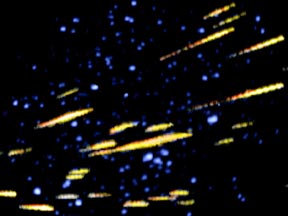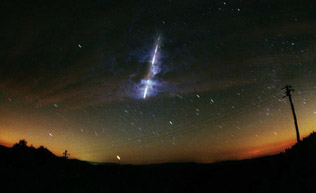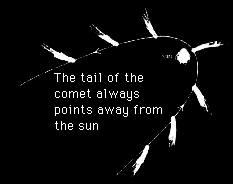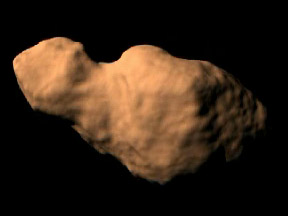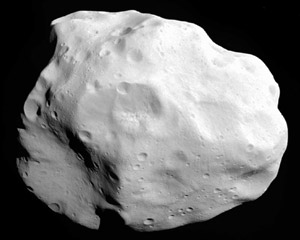Click on image for full size
Original Windows to the Universe artwork by Randy Russell using orbital information from NASA/JPL.
Asteroid (or Comet?) 3200 Phaethon
In 1983, a satellite named IRAS (Infrared Astronomical Satellite) discovered a strange, dark object orbiting the Sun. The object, which was given the name 3200 Phaethon, turned out to be an asteroid. It was the first time in history that a satellite discovered an asteroid!
Or so it seemed. 3200 Phaethon is a mysterious object, and astronomers are not quite sure whether it is an asteroid at all! Instead, it may be the burned out, skeletal remains of an extinct comet. In either case, 3200 Phaethon appears to be the source of the meteoroids that flash through Earth's sky each year in mid December as the Geminid meteor shower. Scientists are trying to determine which of two possible stories about this object is true.
3200 Phaethon may be an asteroid. So how could it create a meteor shower, a phenomenon usually associated with the remains of comets? 3200 Phaethon's orbit does at times send it into the main asteroid belt, a relatively crowded region in our solar system. Perhaps it collided with another asteroid, knocking a cloud of debris loose from the asteroids. This debris cloud would spread out along 3200 Phaethon's orbit over time. When Earth crosses 3200 Phaethon's orbit each December we would see the debris as a series of meteors.
A second possibility is that 3200 Phaethon is the burned out remains of a comet. The objects unusual orbit repeatedly swings it close to the Sun... very close. At perihelion, 3200 Phaethon's closest approach to the Sun, the object swings well inside the orbit of Mercury. It gets to within about 1/7th of the distance between the Earth and the Sun (0.14 AU), or about 58% of the average distance between Mercury and the Sun. As you might guess, passing this close to the Sun heats 3200 Phaethon to very high temperatures. Astronomers estimate that its surface temperature may reach 750° C (1,385° F). After numerous passes by the Sun, this heat would boil all of the ices off of the comet, leaving its charred remains looking much like the surface of an asteroid. As is the case with other comets that produce meteor showers, the dust flung off the comet that in the past would have formed 3200 Phaethon tails would have gradually spread around the object's orbit, and would have thus be the source of the Geminid meteors.
Scientists are not yet sure which of these two scenarios is true. They do know that 3200 Phaethon is a very dark object, and that it has a diameter of about 5.1 km (3.2 miles).
3200 Phaethon's name is derived from its perilous passages near the scorching Sun. In Greek mythology, Phaëton was the son of the Sun god Helios. Phaëton insisted on driving his father's chariot of the Sun, and did a rather poor job of it when his father gave him a chance. First, he veered too high, chilling the Earth. Next, he accidentally flew too low, turning most of Africa into desert and (so the story goes) burning the skin of the Ethiopians black. Eventually Zeus was forced to intervene, hurling a lightning bolt at the chariot. Even in the days of the ancient Greeks, parents got gray hairs when they handed over the keys to their kids!








